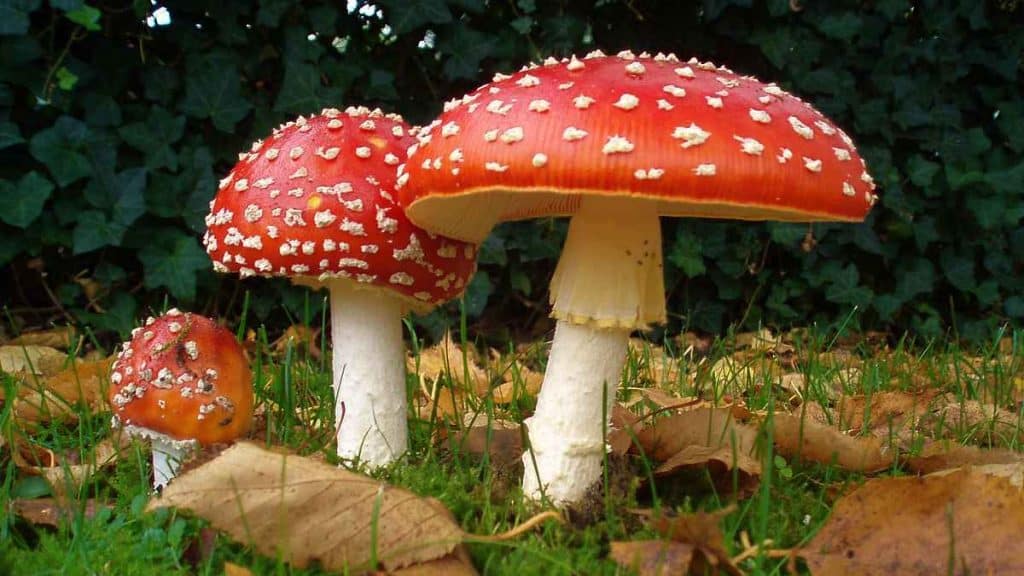With its eye-catching vibrant red cap adorned with white spots, the Amanita muscaria mushroom has fascinated different cultures for centuries. The widespread appeal of this Amanita mushroom species has led to its incorporation into legends, myths, and religious practices.
In this short article, we will explore the fascinating folklore and rich history of Amanita muscaria, looking at its role in various cultures. We will begin by discussing this Amanita mushroom’s ancient roots before looking at how it has become a part of European folklore.
Amanita Muscaria’s Ancient Roots
Amanita muscaria has been around since prehistoric times. The mushroom grows in several parts of the Northern Hemisphere, including Europe, Asia, and North America. Consequently, many indigenous peoples have formed complex ties with the fungus, incorporating it into their religious ceremonies, rituals, and folklore.
For example, native peoples in Siberia, particularly shamanic tribes, revered Amanita muscaria for its hallucinogenic effects. Shamans thought that by ingesting Amanita muscaria, they might communicate with the spirit realm and obtain wisdom and insights. The hallucinogenic effects of this amanita mushroom were thought to be a means of transcending ordinary reality and accessing higher realms of consciousness.
The earliest references to Amanita muscaria are traceable back to Hinduism’s holy scriptures, the Vedas. A mysterious plant known as the Soma, described in the Rig Veda, has been suggested to be linked to Amanita muscaria by ethnomycologist R. Gordon Wasson. Ancient peoples revered the Soma as a god and used the plant to prepare a divine beverage that supposedly offered immortality and spiritual enlightenment. Similarly, another sacred plant, known to the Persians as Haoma is speculated to be the Amanita muscaria.
Amanita Muscaria in European Folklore
Amanita muscaria is very well-known in European folklore. The mushroom’s eye-catching appearance, as well as its relationship with mystical and legendary figures, assured its inclusion in folklore and stories.
Amanita muscaria is thought to be the “Fly Agaric” referenced in ancient manuscripts in Nordic mythology. It was identified with the god Odin, and the Amanita muscaria’s red and white hue was compared to Odin’s famed blood-dripping spear, Gungnir. Furthermore, the intoxicating powers of the mushroom were thought to provide warriors with courage and invincibility.
Amanita muscaria was used in Christmas rituals in Central Europe. Many believe the mushroom to be the inspiration behind the modern-day Santa Claus. In ancient times, shamans used to collect the mushrooms, dry them, and then give them as gifts during winter solstice ceremonies. The mushrooms were placed in stockings or hung on trees to dry, creating an image evocative of the modern-day use of red-and-white stockings at Christmas time.
Can You Buy Amanita Muscaria Products Online?
Yes, you can buy Amanita muscaria products from the leading brand VidaCap. VidaCap is an American-based mushroom supplement company specializing in medicinal mushrooms. Among its product range are its hugely popular Amanita muscaria gummies, each infused with 500mg of Amanita extract. They are vegan-friendly and gluten-free and come in a delicious Berry-Mango flavor.
VidaCap has all of its products, including its Amanita muscaria gummies, tested by third-party labs to verify their purity and safety. You can find links to the lab reports on the product page on VidaCap’s website, vidacap.com.
These independent lab reports, also known as Certificates of Analysis, give a breakdown of the ibotenic acid and muscimol concentration contained in VidaCap’s Amanita muscaria gummies.
During the decarboxylation process, ibotenic acid converts to muscimol, which has more relaxing and calming effects. While not everyone will have the exact same experience, most who try VidaCap’s Amanita muscaria gummies say they have calming and balancing effects.
Final Thoughts on Amanita Muscaria History and Folklore
Amanita muscaria has left an indelible mark on human culture and features prominently in ancient historical texts and modern-day folklore. From the spiritual practices of Siberian shamans to its role in European mythology, Amanita muscaria has an enduring presence in modern popular culture.
As we continue to explore and appreciate the natural world around us, Amanita muscaria serves as a reminder of the profound connections between humans and the plants and fungi with which we share the planet.
Amanita muscaria continues to captivate modern society through its representation in popular culture, art, and literature. Its image is frequently used in fairy tales, children’s books, and fantasy films, reinforcing its mythical status and sparking the imagination.
